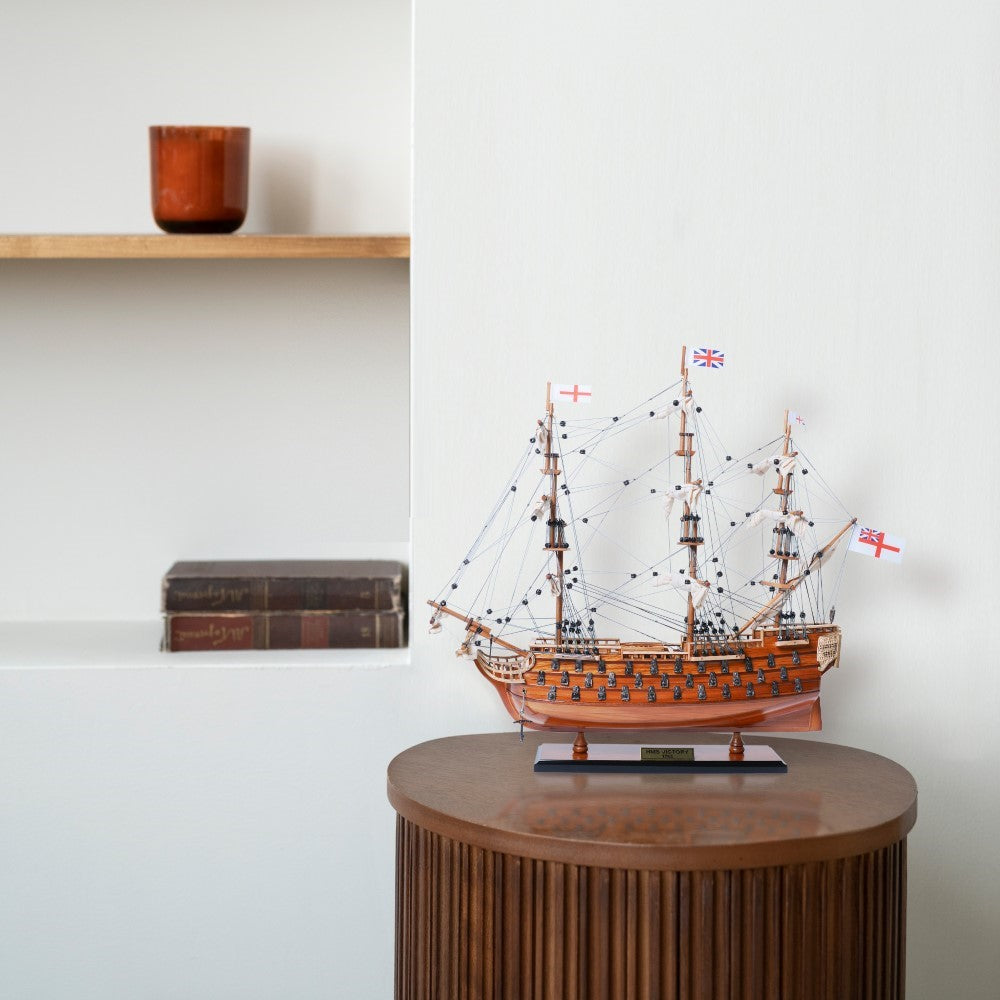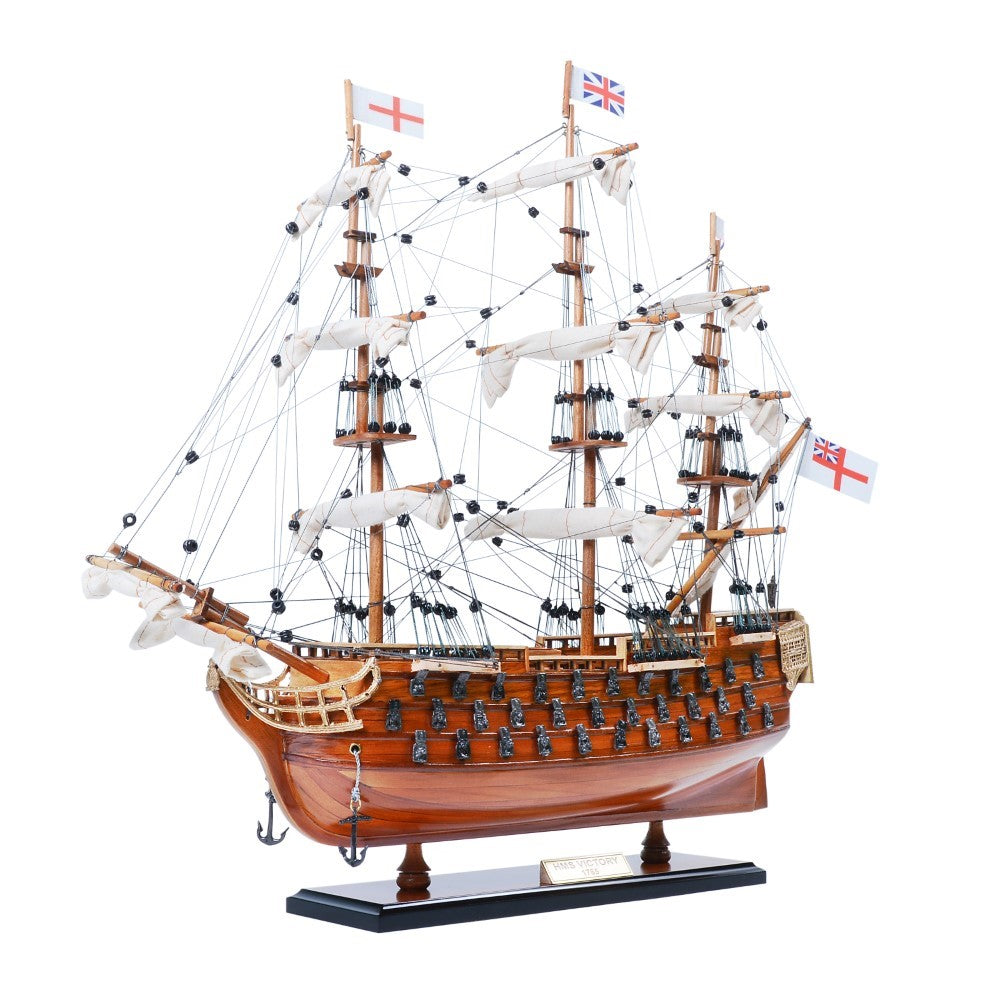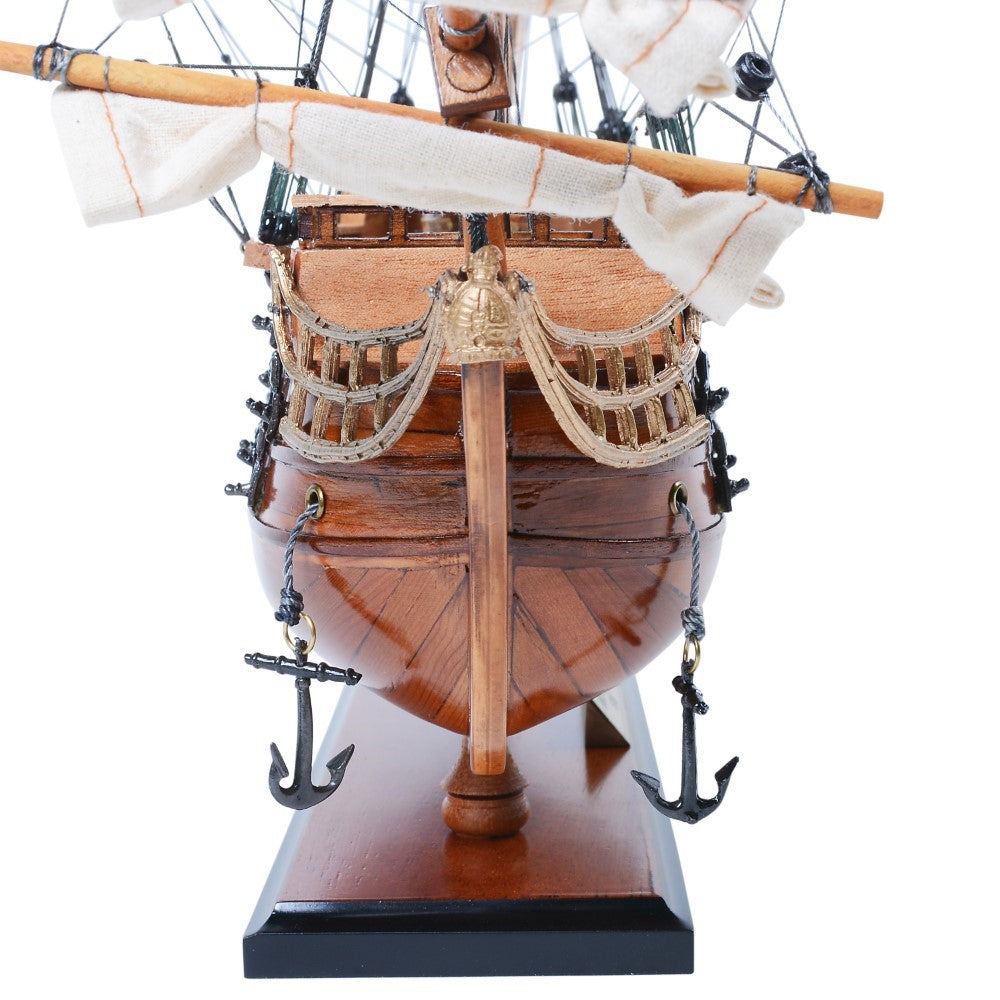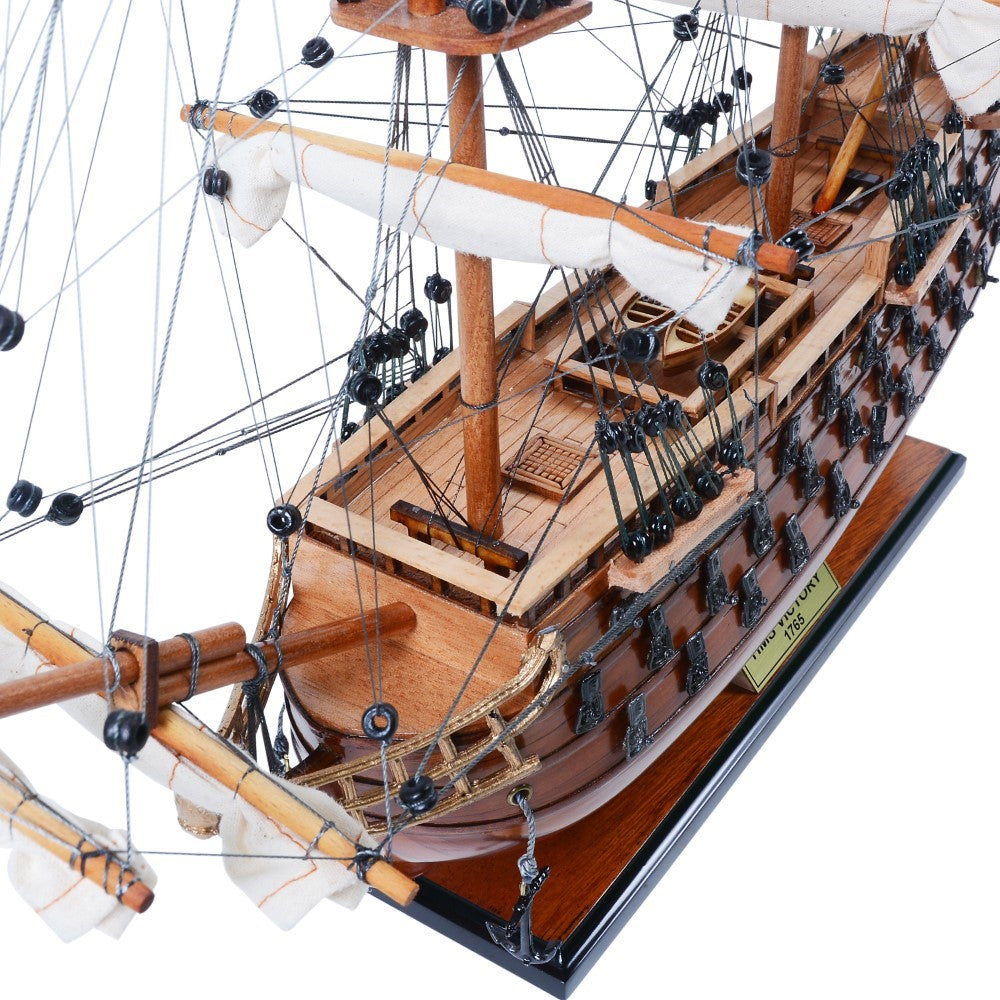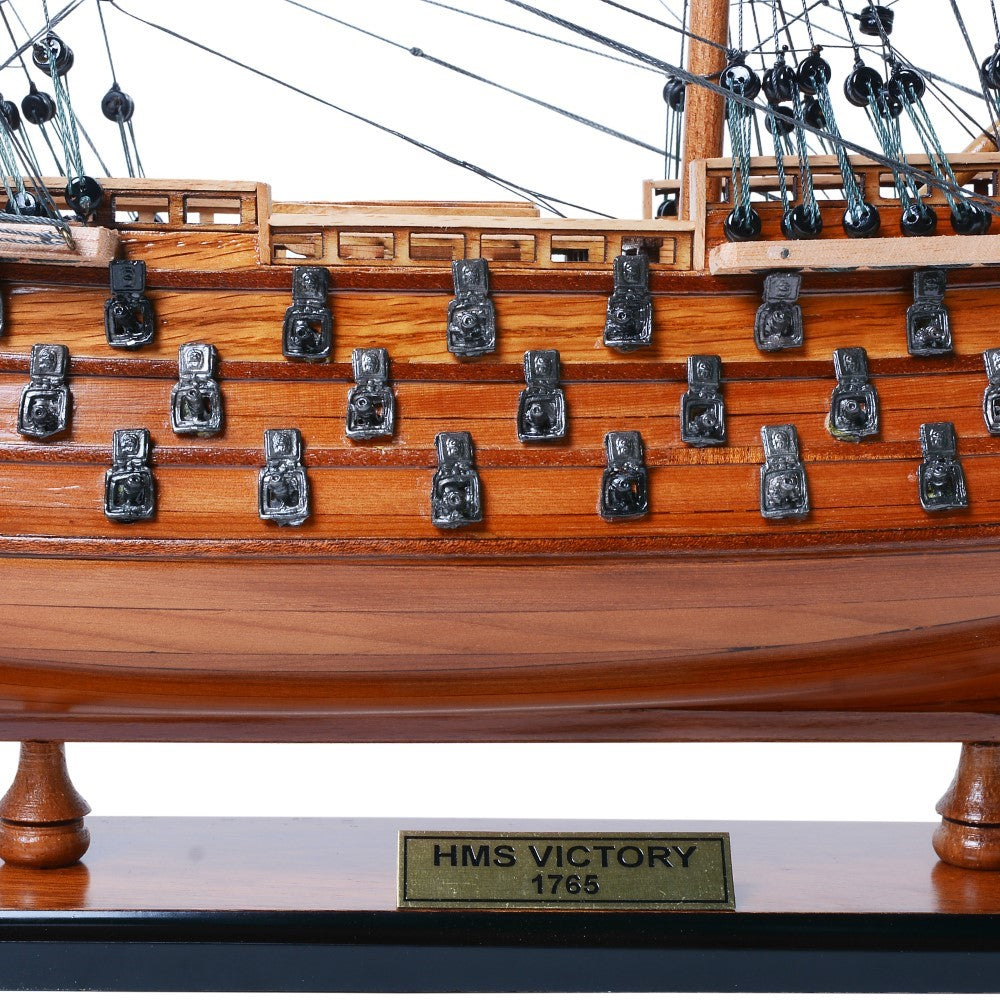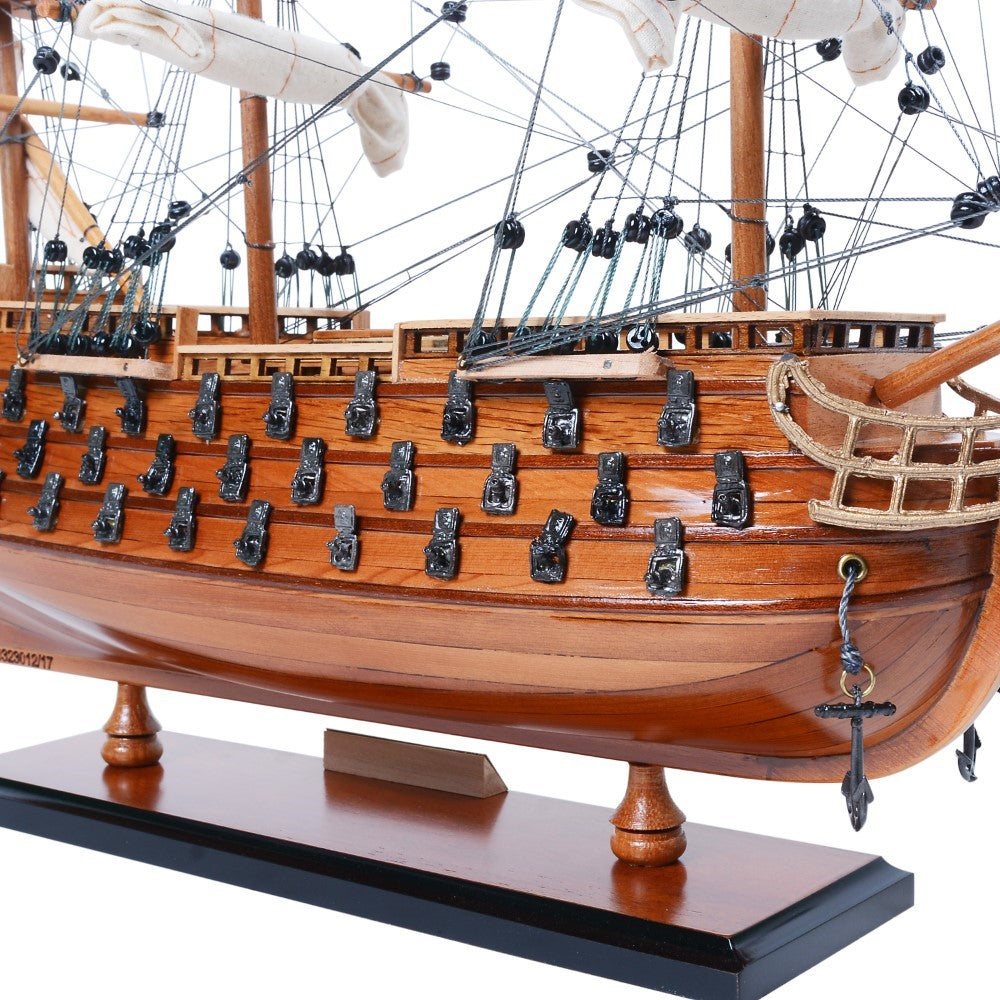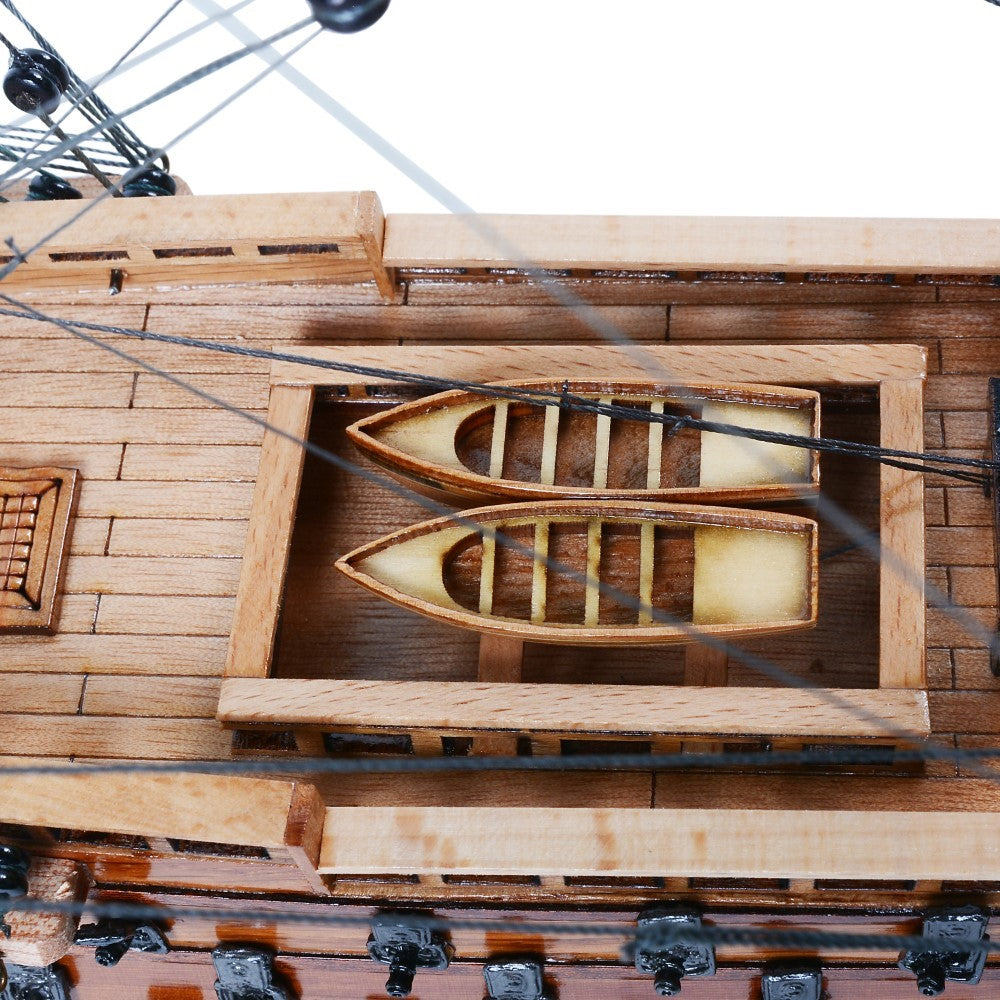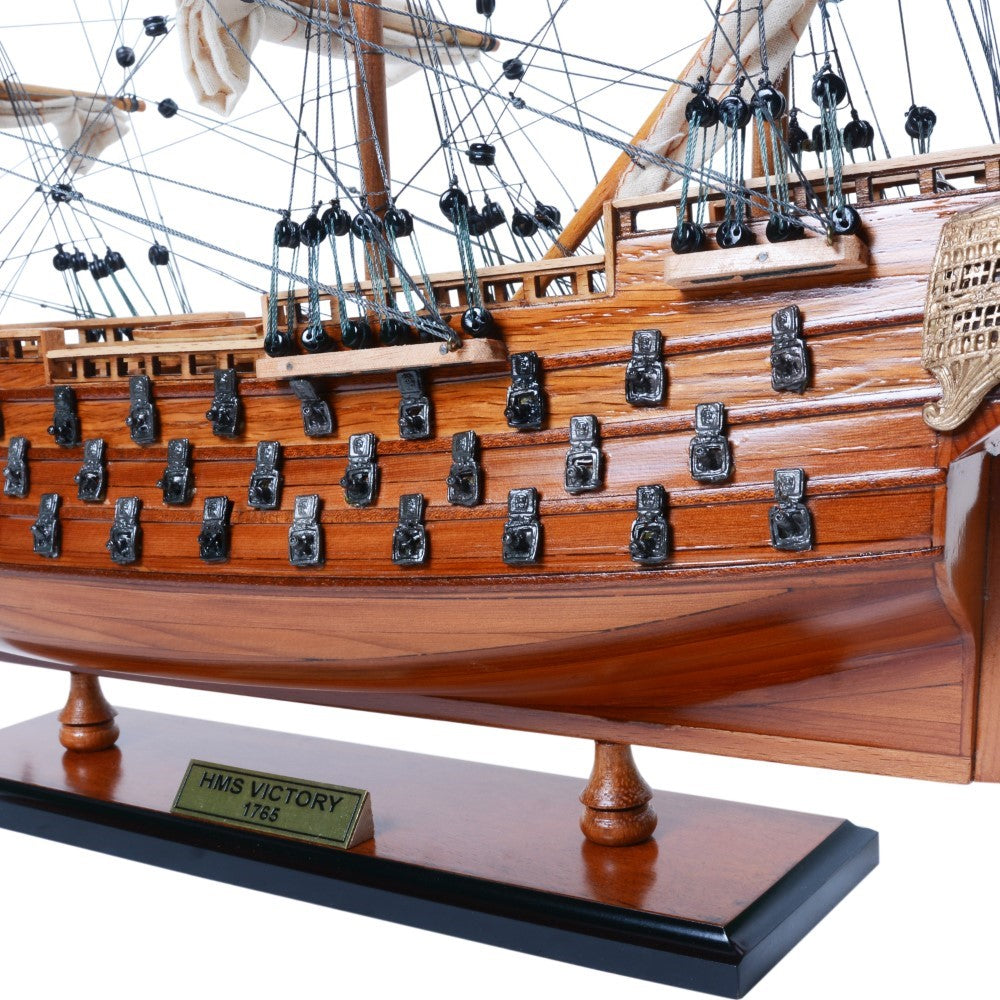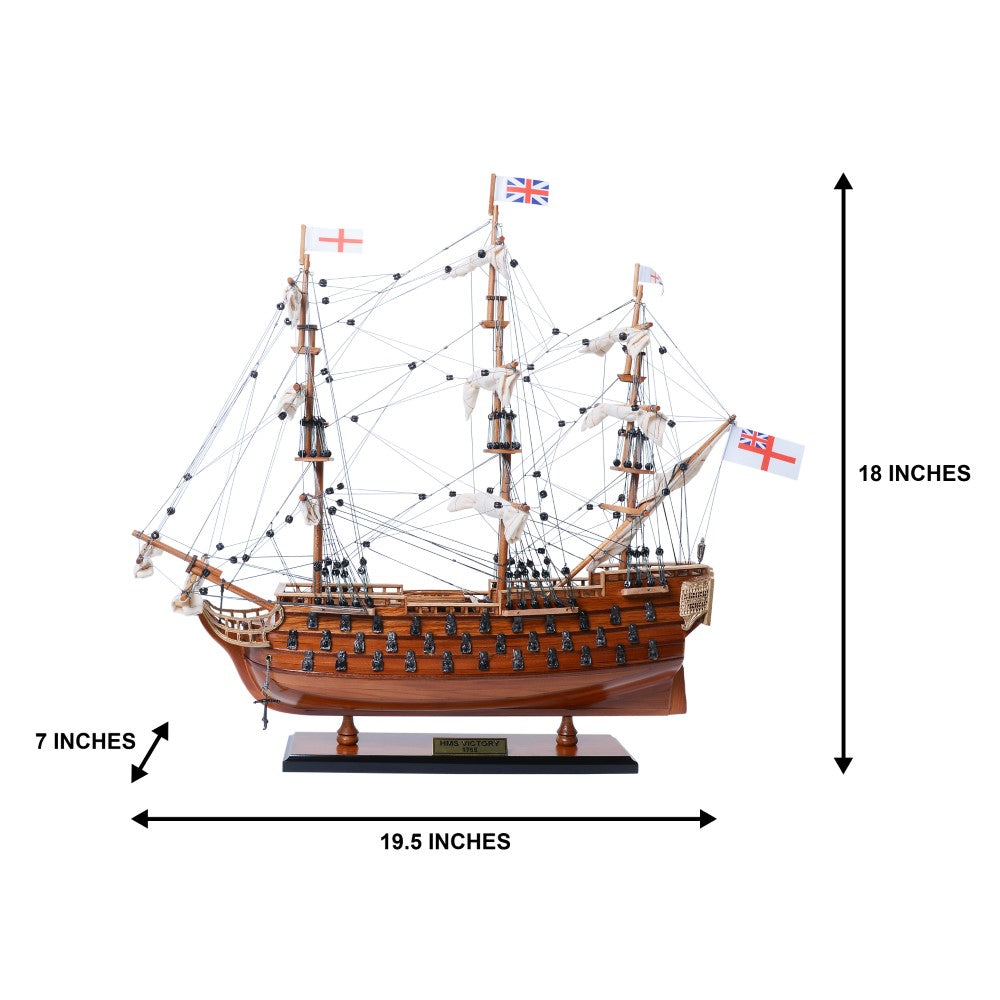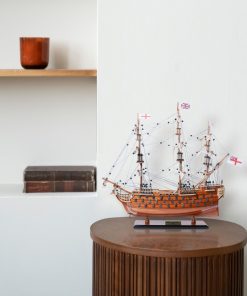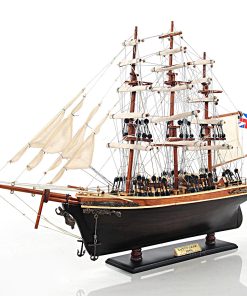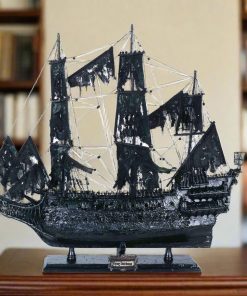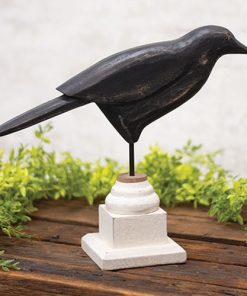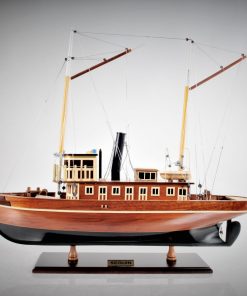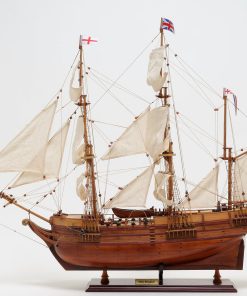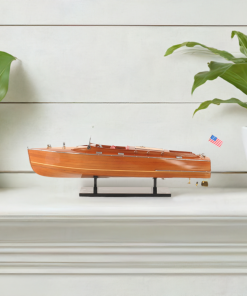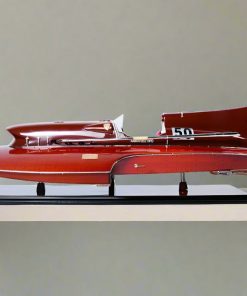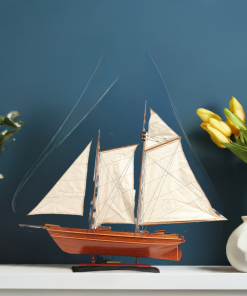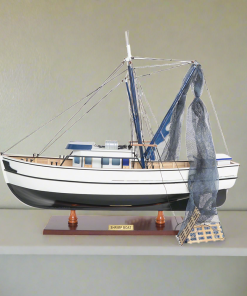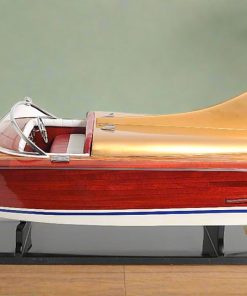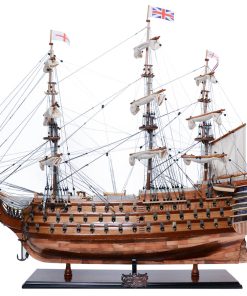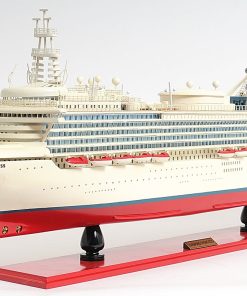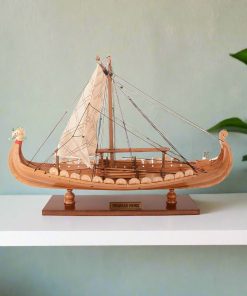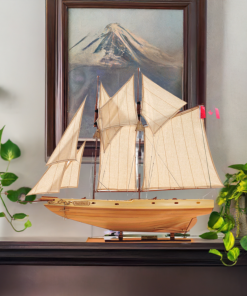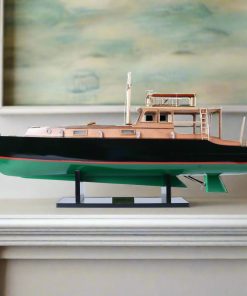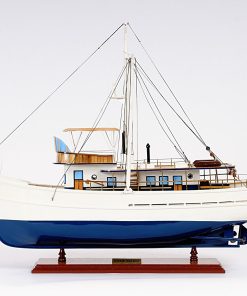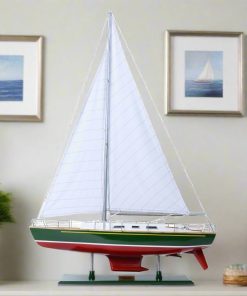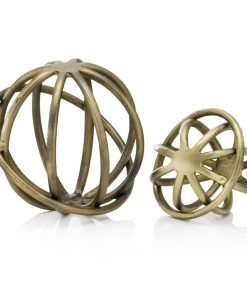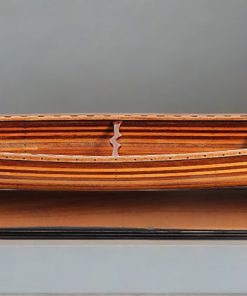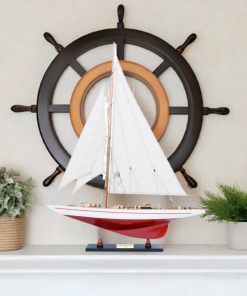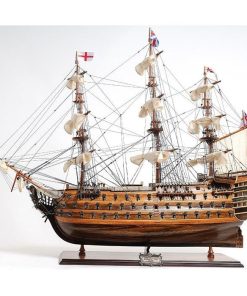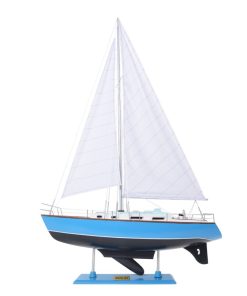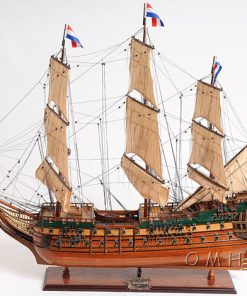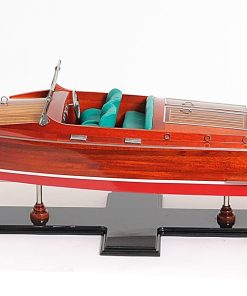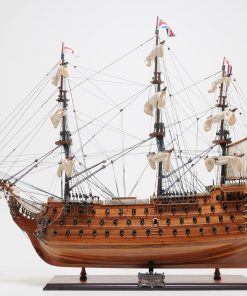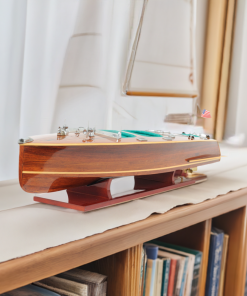Experience the elegance and luxury of owning an HMS Victory model ship, in a smaller version that can suit any home decor. Crafted from exquisite rosewood, mahogany, teak, and other exotic woods, this handcrafted ship features a plank on frame construction for a flawless hull. Each strip of wood is meticulously joined together by skilled master craftsmen, resulting in a stunningly realistic model. Indulge in the finest craftsmanship with this one-of-a-kind piece for true boat enthusiasts.
Indulge in the exquisite craftsmanship of this ship, adorned with a glossy varnish and intricate detailing. From the wooden bowsprit to the foremast, mainmast, and mizzen mast, each element is carefully connected and complemented by intricately stitched fabric sails. The rigging, in matching hues, is meticulously fastened by hand, adding to the luxurious allure of this model ship.
This exquisite model ship features a small wooden cabin and a stunning wooden boat on the main deck, as well as a luxurious wooden cabin on the quarter deck. The beakdeck area is beautifully enclosed by wooden fences, leading to the quarter deck area. The hull boasts an impressive array of metal cannons and finely crafted metal elements on the bow and stern.
This model also features a handcrafted wooden rudder for precise and elegant maneuvering. Included is a wooden stand with an engraved nameplate reading “HMS Victory 1805,” adding a touch of sophistication. The model was meticulously constructed to scale, using only the finest materials such as high-quality wood and metal components, based on original plans, photographs, and illustrations.
This HMS Victory model ship arrives to. you fully assembled and ready for display.
A little history:
HMS Victory, launched at Chatham in 1765, was a 100-gun ship of the line with a length of 227.5 ft overall (69.34 m), a displacement of 3500 tons, and a crew of more than 800 men.
On Oct. 21, 1805, at the Battle of Trafalgar, twenty-seven British ships of the line led by Admiral Lord Nelson aboard HMS Victory defeated thirty-three French and Spanish ships of the line under French Admiral Villeneuve. The battle took place in the Atlantic Ocean off the southwest coast of Spain, just west of Cape Trafalgar. The Franco-Spanish fleet lost twenty-two ships and the British lost none.
In the 1920s, HMS Victory was put in a dry dock and restored to her condition under Nelson. She was unveiled to the public in all her glory by King George V on 17 July 1928 at Portsmouth. She retains her status as a fully commissioned ship in the Royal Navy and serves as the flagship of the Naval Home Command, but to her visitors, she remains a precious museum and testament to Britain’s naval past.
Professional packing and fast shipping
Due to our longstanding partnership with UPS FedEx DHL and other major global carriers, we can offer a variety shipping options. Our warehouse staff is extremely skilled and will package your products according to our precise and exact specifications. Your products will go through an extensive inspection and will be securely secured prior to being delivered. Everyday we deliver thousands of packages to clients from all over the world. Our dedication to becoming the largest online retailer around the globe is evident by this. The distribution centers and warehouses distribution are located in Europe and the USA.
Note: Orders that contain more than one item are assigned a processing period according to the item.
Prior to shipping We will examine thoroughly the items you have ordered. Today, the majority of orders will be delivered within 48 hours. The delivery time will be between 3 and 7 working days.
Returns
We don't control the inventory in our warehouse and factory. The levels of stock can change at any time. You may not receive your order once it has been placed.
Our policy is valid for 30 days. If you have passed 30 days without a trace since the purchase however, we're unable to give you a return or exchange.
Your item should be in the original packaging and in good condition. It must also not be used. It must also be returned in the original packaging.
Related products
Sculptures & Statues
Sculptures & Statues
Sculptures & Statues
Sculptures & Statues
Sculptures & Statues
Sculptures & Statues
Sculptures & Statues
Sculptures & Statues
Sculptures & Statues
Sculptures & Statues
Sculptures & Statues
Sculptures & Statues
Sculptures & Statues
Sculptures & Statues
Sculptures & Statues
Sculptures & Statues
Sculptures & Statues
Sculptures & Statues
Sculptures & Statues
Sculptures & Statues
Sculptures & Statues
Sculptures & Statues
Sculptures & Statues
Sculptures & Statues
Sculptures & Statues
Sculptures & Statues
Sculptures & Statues
Sculptures & Statues
Sculptures & Statues
Sculptures & Statues
Sculptures & Statues
Sculptures & Statues
